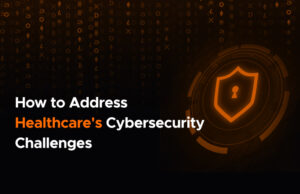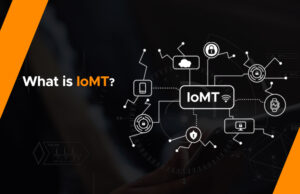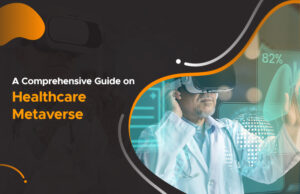According to a recent study, 89% of the healthcare organizations surveyed had at least one cyberattack in the previous year. Since the implementation of COVID-19, the risk of cybersecurity issues in the healthcare industry has significantly increased due to factors like remote work, new systems to support it, staffing issues, and improved patient care requirements.
The healthcare industry must constantly consider the unique cybersecurity challenges of the ever-changing healthcare cyber threat landscape, from ransomware to COVID-19 struggles to unauthorized disclosure and constant technological innovation. Cyber threats and security flaws may jeopardize healthcare professionals’ access to patient-protected health information (PHI), but these difficulties are not insurmountable.
Healthcare organizations must take steps to protect sensitive patient data, and cybersecurity must be given top priority in the healthcare industry. Threats may not always originate from outside the hospital; internal threats may also be the root of cyberattacks. Therefore, it’s critical to be aware of the various threats that affect the healthcare sector.
Continue reading this article to learn more about healthcare cybersecurity challenges and how to fight against them to protect PHI.
Leading Cybersecurity Challenges in the Healthcare Industry
The healthcare sector is a prime target for cybercriminals due to poor cybersecurity procedures, sensitive data storage, and a desperate attempt to maintain business continuity at all costs. The pandemic only made this inevitable.
The healthcare sector’s most prominent cybersecurity challenges are listed below to demonstrate the relevance of healthcare cybersecurity programs in the context of recent cyberattacks. The security of healthcare data and patient information is most at risk from these cyber threats.
Breach of Data
In 2021, the average expense of a healthcare data breach was $9.6 million. Therefore, it is evident that one of the biggest problems facing the healthcare industry is data breaches. The focus is on effective device management, monitoring, and encryption of sensitive patient and medication-related data. Additionally, HIPAA compliance is required of healthcare software vendors and organizations. It aids them in safeguarding their private data. Few of them, though, adhere to it strictly, allowing hackers access to the information.
Malware and Ransomware
In a subset of malware known as ransomware, hackers encrypt data on a victim’s computer and demand payment to decrypt it and restore access. Ransomware is the most dangerous of all the modern cyberattacks that healthcare professionals encounter. Ransomware was the cause of 304.7 million attacks globally in the first half of 2021, up 151% from 2020. Cybercriminals carry out these attacks by infecting computers with trojan viruses or sending phishing emails to trick recipients into clicking a link to download a specific attachment.
Legacy Systems’ Vulnerability
The current imperative is to replace antiquated systems with a modernized ecosystem. However, many healthcare organizations are hesitant to abandon their established practices because they are afraid of change. Additionally, because the outdated system lacks any defense against current malware and viruses, it raises the possibility of a significant cyberattack. When the IT infrastructure isn’t upgraded, a back door entry point is created that most cyber attackers ritually exploit. Reasons for this include limited budgets, the cost of up-skilling, compliance guarantees, and complacency.
Unsafe Medical Equipment and Devices
Hospitals in the modern era house a vast amount of medical data. To treat patients, all healthcare professionals use connected medical devices. Secure access to such medical tools and equipment is essential, given their frequent use. Unfortunately, most hospitals don’t place much emphasis on this factor, which can lead to a significant cyberattack. By 2020, approximately five million unsecured medical devices were active on IoT and IoMT. It allows potential attackers to access unprotected devices and seize total command.
Threats From Within
Not all cyberattacks originate from outside parties; insiders also play a significant role in these attacks. For instance, there is a possibility that some disgruntled employees will decide to steal confidential data or cause network disruptions to affect availability. Insider threats, which have increased by 47% over the past couple of years, are these kinds of attacks. Many businesses firmly believe that privileged users are the ones who initiate insider threats. Because of this, it’s imperative to monitor them constantly.
Attack by Distributed Denial of Service
A distributed denial of service (DDoS) attack aims to overwhelm a website or network with internet traffic, impairing its performance and availability. To bring down a server, cybercriminals use bots to send excessive requests. Ransomware and DDoS attacks are among the most destructive cybersecurity attack combinations, and attackers frequently use them. As healthcare providers cannot afford to be unavailable for an extended time, attackers can also bring down healthcare websites for a long time and trigger severe panic attacks.
New Technology Introduces a Brand-new Cybersecurity Risk
Every new technological development brings a brand-new security risk that must be considered. Efforts to secure healthcare data have benefited from and been hampered by the actions of cloud computing and artificial intelligence (AI) technologies.
According to recent research, artificial intelligence tools can successfully support cybersecurity efforts. AI can help humans reduce cyber risks by assisting in the continuous network monitoring required to identify threats quickly. A CAGR of 23.66 percent is predicted from 2020 to 2027 for the use of AI in cybersecurity.
Healthcare organizations must begin educating their staff members about cybersecurity threats to improve cybersecurity. They must also ensure they do not click on malicious links or download malicious attachments. To protect sensitive patient data, it is crucial to increase awareness of the new threats as the number of cyberattacks on healthcare organizations rises.
Conclusion
To be ready and effectively handle threats, they must create policies. Similarly, it’s crucial to identify the points where they are susceptible to attacks and take action to close those gaps.
The problem is made worse in the healthcare sector because of the sensitive data and vital information linked to it. No healthcare institution can assert complete control over its digital assets due to the increase in new cybersecurity attacks each year. To stay relevant and sustainable in the industry, you need to be aware of the difficulties in the healthcare sector.
The need for healthcare providers to be more aware of and ready for critical cybersecurity situations is increasing daily. The only way to lessen security risks and threats is through awareness, alertness, preparation, and swift action. It’s complex, but if you’re willing to remain dedicated to the cause for a considerable amount of time, it will pay off handsomely for a robust healthcare ecosystem.







